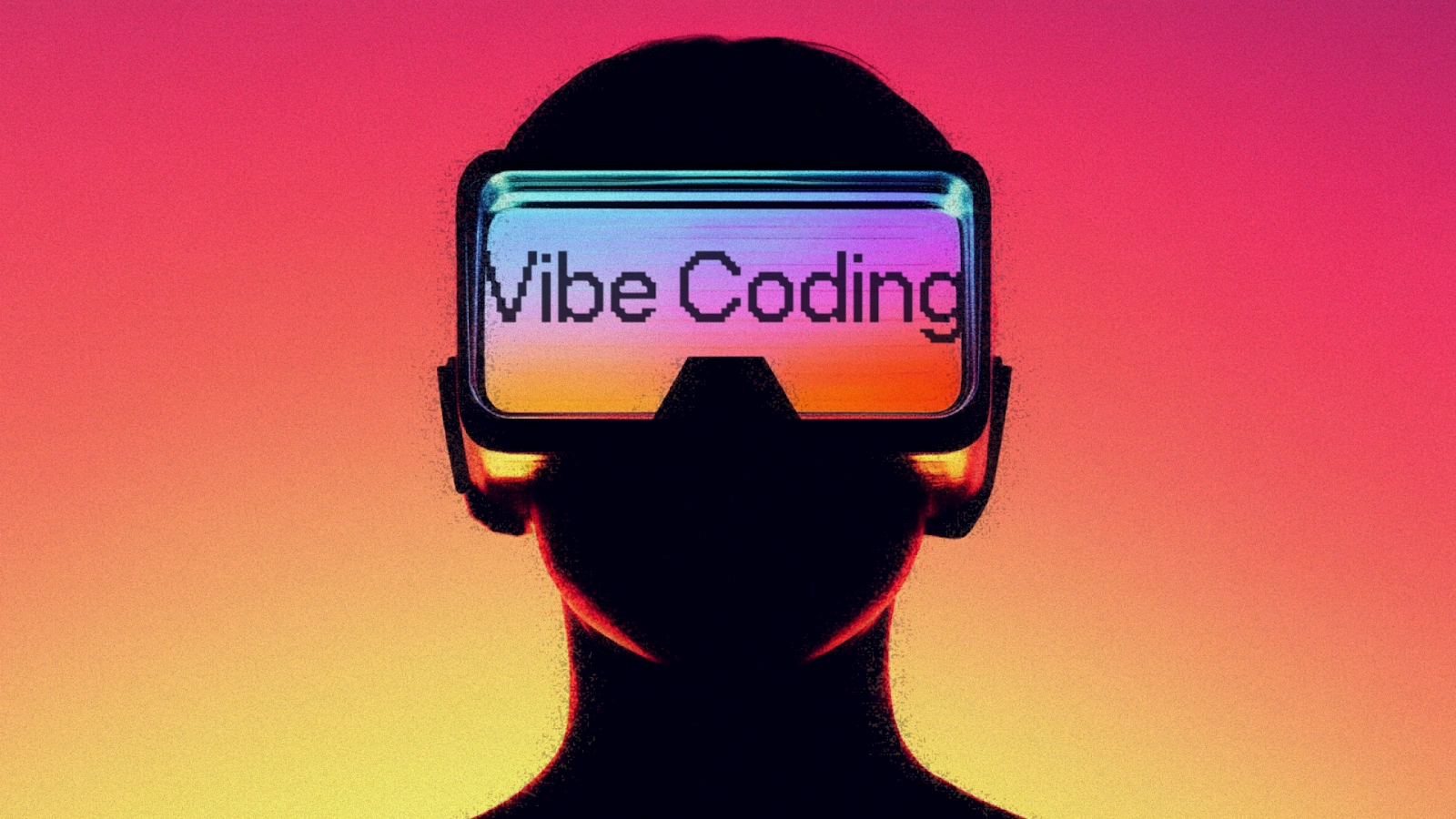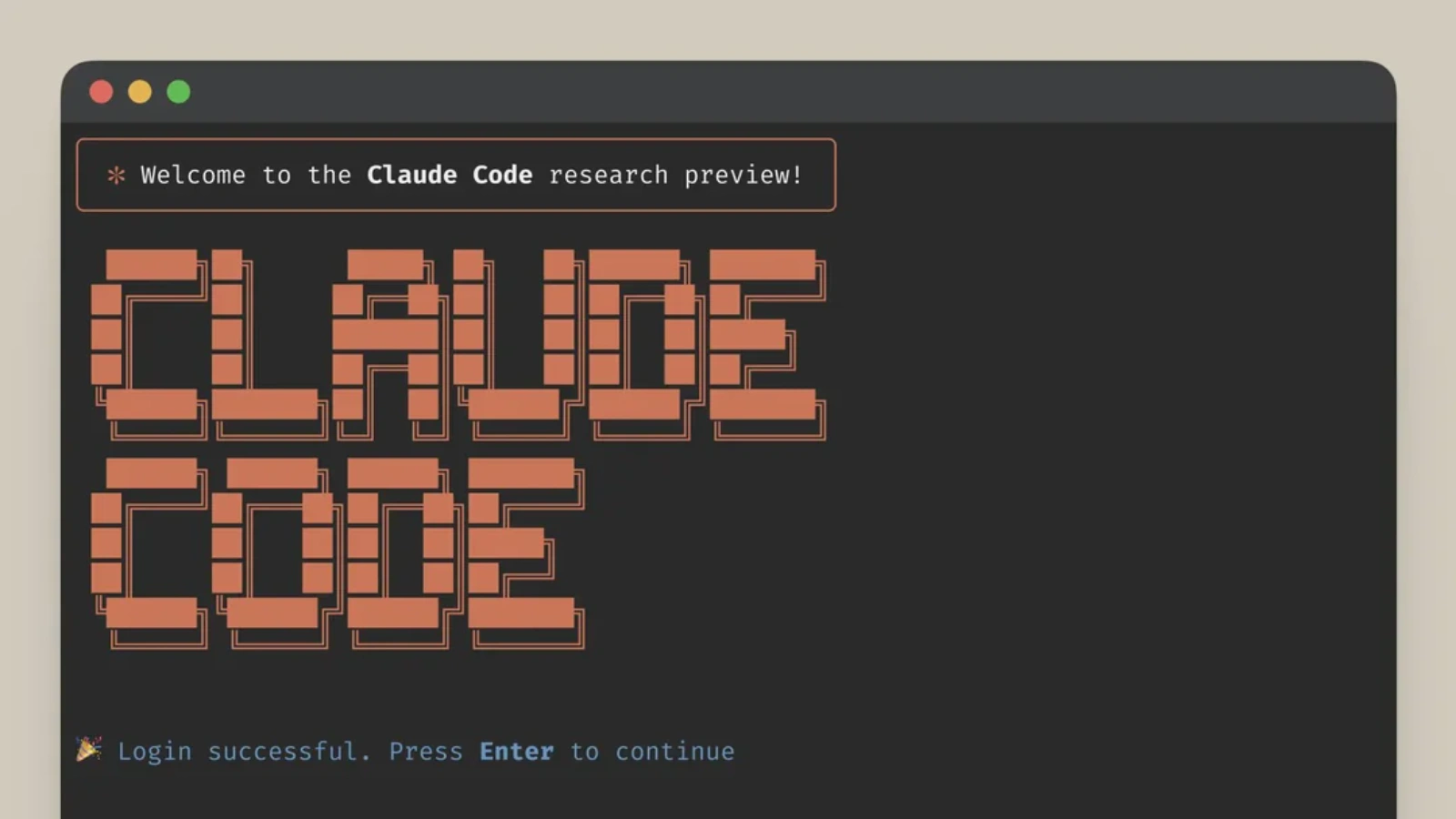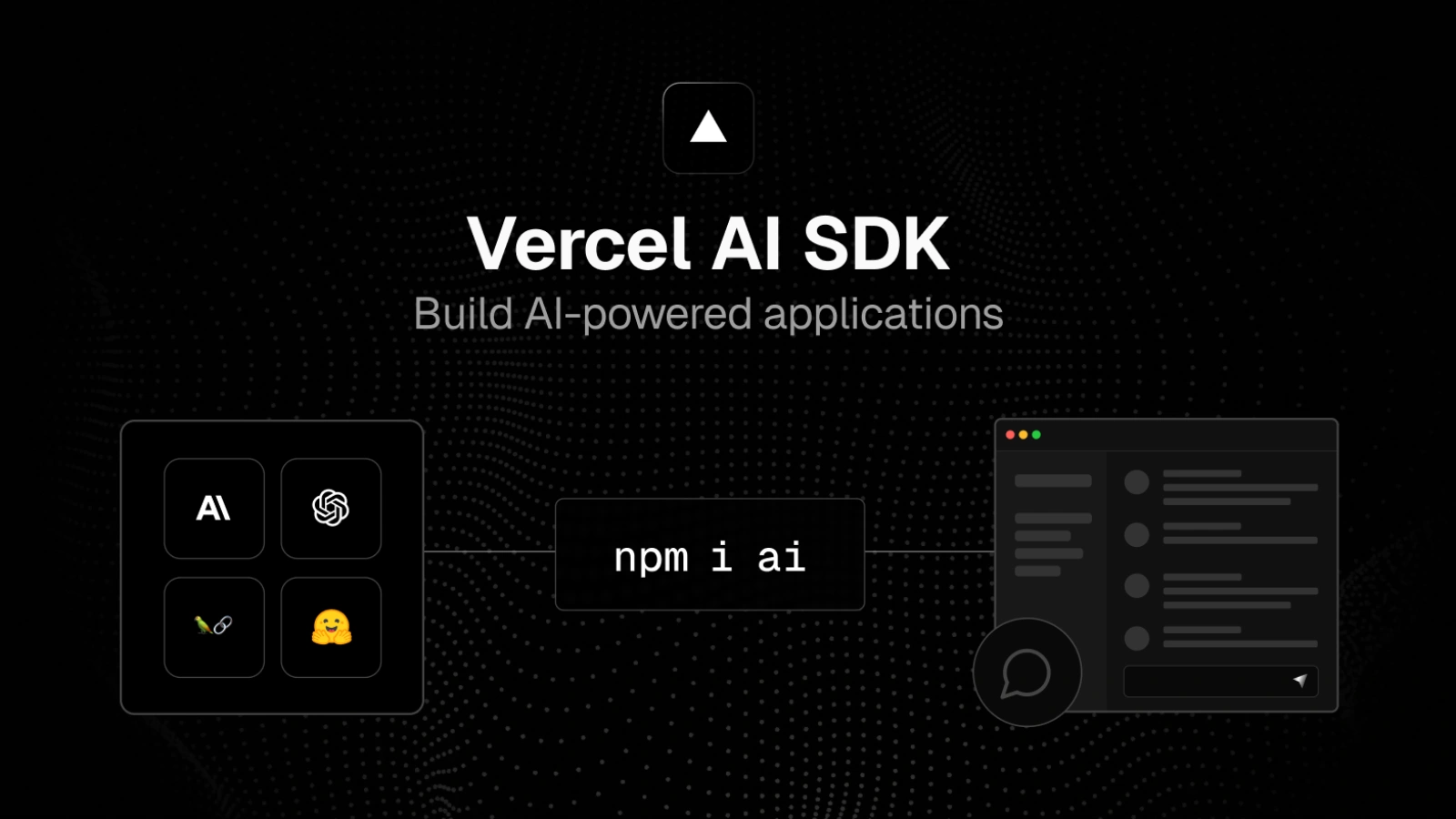Software development is undergoing a fundamental transformation. As AI-powered coding assistants become increasingly sophisticated, a new programming methodology has emerged that's changing how developers think about writing code. Welcome to the era of vibe coding—a paradigm shift that prioritizes intuition, flow, and high-level thinking over rote memorization and syntax battles.
Vibe coding represents more than just using AI tools; it's a complete reimagining of the developer experience. It's about coding by feel, letting your intentions guide the process while AI handles the mechanical details. For developers who've felt constrained by traditional coding practices, vibe coding offers a liberating alternative that feels more like creative expression than technical drudgery.
What Is Vibe Coding?
Vibe coding is a development methodology that emerged in 2024-2025, characterized by a more intuitive, conversational approach to writing software. Rather than meticulously typing every character of code from memory, vibe coders focus on high-level logic and intent, relying on AI-powered tools like Cursor, GitHub Copilot, and Claude to fill in implementation details.
The term "vibe" captures the essence of this approach: it's about maintaining creative flow and momentum rather than getting bogged down in syntax minutiae. When you're vibe coding, you're thinking about what you want to build, not how to type it character by character.
Think of it like having a conversation with an incredibly knowledgeable pair programmer who understands your intentions and can instantly translate them into working code. You describe what you need—whether through natural language, rough pseudocode, or high-level sketches—and the AI helps materialize your vision.
The Rise of AI-Assisted Development
Vibe coding didn't emerge in a vacuum. It's the natural evolution of AI-assisted development tools that have grown exponentially more capable. Tools like Cursor, which integrates Claude and GPT-4 directly into the IDE, have made it possible to have contextual, multi-file conversations about your codebase.
GitHub Copilot pioneered AI code completion, but modern tools go far beyond autocomplete. They understand project context, can refactor across multiple files, explain complex code patterns, and even architect entire features based on natural language descriptions.
This technological foundation has enabled a shift in how developers approach problems. Instead of thinking "I need to write a function that maps over this array," vibe coders think "I need to transform this user data for the dashboard" and let AI suggest the implementation.
Key Principles of Vibe Coding
Vibe coding isn't about abandoning technical knowledge—it's about redirecting mental energy toward higher-value activities. Here are the core principles that define this approach:
Intention Over Implementation: Focus on what you want to achieve rather than how to type it. Express your goals clearly, and let AI handle boilerplate and repetitive patterns.
Flow State First: Minimize context switching and friction. Stay in the creative zone by offloading mechanical tasks to AI assistants.
Conversational Development: Treat coding as a dialogue. Ask questions, iterate on suggestions, and refine implementations through natural language.
Rapid Prototyping: Ship ideas quickly. Use AI to accelerate from concept to working prototype, then refine based on real feedback.
Contextual Intelligence: Leverage AI's ability to understand your entire codebase. Make changes that are architecturally consistent across files and modules.
Tools Enabling the Vibe Coding Revolution
Several cutting-edge tools have made vibe coding practical and powerful:
Cursor has become the poster child for vibe coding. Built from the ground up as an AI-native IDE, Cursor integrates large language models directly into the editing experience. Its Cmd+K command lets you describe changes in natural language, while the chat interface understands your entire project context.
GitHub Copilot brought AI code completion to mainstream IDEs like VS Code. Its inline suggestions and chat features help developers write code faster while maintaining their preferred environment.
Windsurf, Codeium's AI-powered IDE, offers similar capabilities with aggressive pricing and strong multi-model support, making advanced AI assistance accessible to more developers.
v0 by Vercel takes vibe coding into UI development, generating entire React components from text descriptions. It's particularly powerful for rapidly prototyping interfaces.
Claude and GPT-4 themselves can be powerful vibe coding assistants when used through chat interfaces, especially for architectural planning, debugging, and explaining complex codebases.
The Developer Experience Transformation
Vibe coding fundamentally changes what it feels like to be a developer. Traditional programming often felt like translating ideas through layers of syntax constraints and language quirks. Vibe coding removes much of that friction.
Developers report entering flow states more easily and maintaining them longer. When you're not constantly interrupted by syntax lookups and API documentation searches, you can think more holistically about architecture and user experience.
The learning curve for new languages and frameworks also flattens dramatically. Instead of memorizing every method signature and idiom, you can express what you want and let AI provide language-specific implementations. This makes polyglot development more accessible.
Perhaps most significantly, vibe coding democratizes expert patterns. Junior developers can leverage best practices and advanced patterns that would typically take years to master, while senior developers can work at higher levels of abstraction.
Common Criticisms and Misconceptions
Like any paradigm shift, vibe coding has its skeptics. Some common criticisms deserve thoughtful consideration:
"You won't understand the code you're writing" is perhaps the most frequent concern. The reality is more nuanced. Vibe coding doesn't mean blindly accepting AI suggestions. Good vibe coders read and understand generated code, treating AI as a collaborator rather than a magic wand.
"It's just glorified copy-paste from Stack Overflow" misses the contextual intelligence that separates modern AI from simple code search. AI assistants understand your specific codebase, architecture patterns, and naming conventions.
"Real programmers write code from scratch" reflects outdated notions of craftsmanship. The goal of software development is creating value, not demonstrating typing prowess. Vibe coding is a tool, and like any tool, its value depends on skillful use.
"AI makes too many mistakes" is becoming less true with each model generation, but it's still a valid concern. Vibe coders need strong debugging skills and code review practices. The difference is that reviewing AI-generated code is often faster than writing it from scratch.
Best Practices for Effective Vibe Coding
To maximize the benefits of vibe coding while avoiding pitfalls, consider these practices:
Be Specific in Your Prompts: Vague descriptions yield vague code. The more context and constraints you provide, the better the results. Instead of "add authentication," try "add JWT authentication with refresh tokens, storing user sessions in Redis."
Review Everything: Never merge AI-generated code without understanding it. Treat suggestions as starting points that need validation, testing, and refinement.
Maintain Strong Fundamentals: Vibe coding augments developer skill; it doesn't replace it. Understanding algorithms, data structures, and system design makes you a better vibe coder.
Use Version Control Aggressively: When experimenting with AI-generated implementations, commit often. This makes it easy to backtrack when suggestions lead down unproductive paths.
Develop a Prompt Library: Over time, you'll discover phrases and patterns that consistently produce good results. Document these for yourself and your team.
Test Comprehensively: AI can generate tests too. Use it to create comprehensive test suites that validate both AI-generated and human-written code.
The Economics of Vibe Coding
From a business perspective, vibe coding offers compelling advantages. Development velocity increases significantly—many teams report 2-3x productivity gains for certain tasks. This acceleration is particularly pronounced for boilerplate-heavy work like CRUD operations, API integrations, and UI implementation.
The reduced cognitive load also helps prevent developer burnout. When you're not exhausted from fighting with syntax and documentation, you have more energy for creative problem-solving and strategic thinking.
For startups and small teams, vibe coding is particularly transformative. A single developer using AI assistance can accomplish what previously required a team, making ambitious projects feasible with limited resources.
However, there are costs to consider. AI coding assistants require subscriptions, typically $20-40 per developer per month. API costs for self-hosted solutions can add up with heavy usage. Organizations also need to consider code quality oversight and knowledge transfer processes.
Impact on Junior Developers
Vibe coding's effect on learning to program is hotly debated. Some worry that junior developers using AI assistants won't develop fundamental skills. Others argue that AI removes tedious barriers and helps learners focus on concepts rather than syntax.
The evidence suggests both perspectives have merit. AI assistance can accelerate learning when used thoughtfully—seeing well-structured code examples tailored to your specific problem is educational. However, over-reliance without understanding creates fragile knowledge.
The key is intentional learning. Junior developers should use AI to understand why code works, not just to make it work. Asking AI to explain generated code, suggesting alternatives, and discussing trade-offs turns it into a teaching tool rather than a crutch.
Forward-thinking bootcamps and computer science programs are already incorporating AI-assisted development into curricula, teaching students how to collaborate effectively with AI tools while building strong fundamentals.
Vibe Coding and Code Quality
Does vibe coding produce better or worse code quality? The answer depends heavily on the developer.
AI assistants generally produce clean, well-structured code that follows common conventions. They're excellent at consistency—applying the same patterns across a codebase without the lapses in attention that plague human developers.
However, AI can also generate overly verbose code, miss edge cases, or make inappropriate architectural decisions without proper guidance. The responsibility for quality ultimately rests with the developer.
Teams practicing vibe coding successfully typically implement rigorous code review processes, comprehensive testing, and clear architectural guidelines. AI becomes another team member whose contributions need validation.
Interestingly, many teams report improved code quality with vibe coding, not because AI writes perfect code, but because developers have more cognitive bandwidth for architectural thinking, refactoring, and quality improvements.
The Future of Vibe Coding
Vibe coding is still in its early days. As AI models continue improving, the experience will only get better. We're likely to see:
Tighter IDE Integration: AI assistance will become native to development environments, with deeper understanding of project context and better suggestions.
Multi-Modal Coding: Combining voice input, visual design tools, and traditional code editing for truly fluid development experiences.
Collaborative AI: AI assistants that understand team conventions, review code like team members, and maintain consistency across developers.
Specialized Models: AI trained on specific frameworks, industries, or architectural patterns, providing domain expertise on demand.
Automated Refactoring and Optimization: AI that not only writes code but continuously improves it, suggesting performance optimizations and architectural improvements.
Should You Adopt Vibe Coding?
The question isn't whether vibe coding will become mainstream—it already is. Tools like Cursor and Copilot are seeing explosive adoption among developers who experience productivity gains they can't ignore.
If you're a developer, experimenting with vibe coding is worthwhile regardless of your experience level. Start with a side project or non-critical feature. Pay attention to where AI assistance helps versus hinders. Develop your own practices for effective collaboration with AI tools.
For teams and organizations, the transition requires thoughtful planning. Establish guidelines for AI tool usage, maintain code quality standards, and provide training on effective prompting and code review. Consider starting with a pilot team before rolling out widely.
The developers who thrive in the coming years won't be those who resist AI assistance, but those who learn to leverage it effectively. Vibe coding isn't about replacing programmer skill—it's about amplifying it, removing friction, and enabling developers to focus on what they do best: solving problems creatively.
Embracing the Vibe
Vibe coding represents a fundamental shift in how we think about software development. It's not just new tools; it's a new relationship with the craft of programming. By embracing intuition and flow while leveraging AI's capabilities, developers can achieve a level of productivity and creativity that seemed impossible just a few years ago.
The traditional metrics of developer skill—typing speed, syntax memorization, API recall—are becoming less relevant. What matters now is architectural thinking, problem decomposition, effective communication with AI assistants, and the judgment to evaluate and refine generated code.
For some, this shift feels unsettling. For others, it's liberating. Regardless of your initial reaction, vibe coding is shaping the future of software development. The question isn't whether to adapt, but how quickly you can evolve your practice to leverage these powerful new capabilities.
Welcome to the era of vibe coding. The code you write tomorrow will look very different from the code you wrote yesterday—and that's a good thing.



